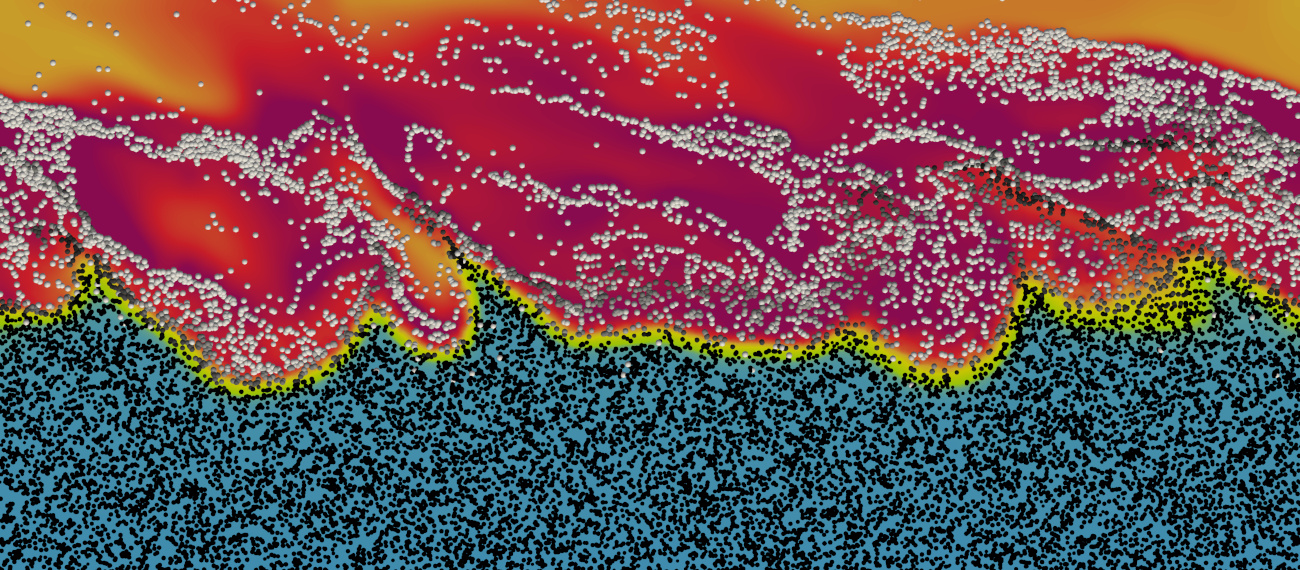A promising technology for future energy conversion and storage systems is the oxidation of iron to various types of iron oxides. Due to its high energy density and abundance in conjunction with its excellent storage and transportation properties iron has a high potential to serve as a carbon-free energy carrier. When suitably combining iron oxidation with the reverse process of iron oxide reduction based on renewable energy sources, a sustainable circular zero-carbon energy economy can be developed. The development of iron combustion technologies for industrial systems is still at an early stage which drives significant research efforts to better understand the underlying fundamental chemical and physical processes. Similar to the combustion of coal and biomass, the ignition and combustion of iron particles is strongly dependent on the heat and mass transfer phenomena between particles and gas, specific particle properties, gas phase conditions and particle loading. However, due to its non-volatile combustion property iron combustion is significantly different from coal/biomass conversion such that existing modelling strategies for the latter cannot be used without further fundamental analyses and adaptations.
In the present sub-project, carrier-phase direct numerical simulations (CP-DNS) of reacting iron particle clouds in turbulent shear flow are conducted to shed light on the underlying physics. The carrier-phase DNS resolves all scales of the turbulent reacting flow, but reverts to modelling of the particle boundary layers around the Lagrangian point particles. In a preliminary step, single particle burning in laminar flow is simulated to validate the underlying solver framework and iron combustion sub-models. Subsequently turbulent iron particle cloud ignition and combustion are studied for various ambient gas conditions in terms of composition, temperature and particle loading. The CP-DNS improves our understanding of the underlying thermo-chemical phenomena that govern iron combustion in turbulent shear flow, characterises the flame structure in detail and provides reference data for model development in the LES framework.
This sub-project strongly collaborates with the projects led by C. Hasse (numerical investigation of iron dust/air combustion), A. Scholtissek (modelling of single, iron-based microparticles) and B. Frohnapfel (DNS analysis of clustering and combustion of iron particles in homogeneous isotropic turbulence). Further synergies exist with the experimental studies led by B. Böhm (single iron particles and clouds), A. Dreizler (laminar/turbulent iron dust flames), and D. Trimis (laminar iron Bunsen flames).
Scientific questions:
1. What are the major characteristics of the temporal evolution of iron particles that heat up, ignite and burn in a turbulent flow?
2. How is the combustion process affected by the ambient gas conditions, particle cloud properties and turbulence characteristics?
3. What are the driving mechanisms of discrete/continuous iron dust flame stabilisation?
Insight into project results
A three-dimensional CP-DNS of a reacting dust cloud consisting of monodispersed iron particles in a turbulent mixing layer is conducted [1]:
Recommended external content
We have selected external content from YouTube for you and would like to show it to you right here. To do this, you must reveal it with one click. You can hide the external content at any time with another click.
I agree to external content from YouTube being shown to me. This may result in personal data being transmitted to third-party platforms. You can find more information in our Privacy Policy.
Left: Three-dimensional computational domain with gas velocity contour and iron particles coloured by their oxidation progress (black: non-oxidised, white: fully-oxidised). Right: Time evolution of gas temperature + particles coloured by their oxidation progress (top), oxygen mass fraction (middle) and flow vorticity (bottom) in the x-y plane at Lz/2.
The upper stream of the mixing layer is initialised with cold iron particles with a uniform diameter of 10 micron suspended in air, while the lower stream consists of hot air flowing in the opposite direction. As time progresses, turbulent mixing entrains particles from the upper to the lower stream. These particles interact with the lower stream, heat up and begin their oxidation process. When the particles reach a critical temperature, they start to ignite and burn, as can be observed from the local decrease of oxygen and increase of gas temperature.
The number of computational cells for the CP-DNS is ~85 million, ~5 million particles are used and the computational cost corresponds to ~165,225 CPUh. This study shows that the major differences between non-volatile iron flames and volatile-containing solid fuel flames (e.g. coal/biomass) are non-vanishing particles at late simulation times and a stronger limiting effect of the local oxygen concentration on the overall conversion process in iron dust flames [1].
References
[1] Luu, T.D., Shamooni, A., Kronenburg, A. et al. “Carrier-Phase DNS of Ignition and Combustion of Iron Particles in a Turbulent Mixing Layer”. Flow Turbulence Combust (2024).




